Stephanie Anderson is an author, essayist, and educator of Creative Writing. Her latest work, One Size Fits None, explains the differences between conventional and regenerative agriculture, and incorporates a sense of depth through connecting with farmers around the country. Below, Stephanie relates the relationships of agriculture, what she enjoyed about this creative journey, her beliefs on a weed’s contribution to organic land, and details about a spiritual connection to nature.
One Size Fits None informs us of the environmental divide between two sides of farming. When writing this book, did you find it possible to view each operational challenge as interconnected?
Regenerative farmers and conventional farmers do face many of the same challenges, such as inclement weather, weeds, disease, and so forth. And yes, those issues are often interconnected. For example, fertile soil tends to produce healthy plants that resist insect, disease, and weed pressures more effectively, so healthy soil makes overcoming those challenges less daunting.
The difference, of course, is how farmers think about and handle challenges. For example, a conventional farmer usually addresses the challenge of soil fertility with synthetic fertilizer, which actually kills the microbiology required for rich, healthy soil—the kind that stores water and helps plants repel diseases and pests. That decision to use synthetic fertilizer makes overcoming many other challenges more difficult.
But I think regenerative farmers and conventional farmers can bond over their shared struggles. It’s something they have in common and a fruitful place for dialogue to begin.
Who were the writers that were helpful as a guide when writing this book and why?
I have long admired Michael Pollan’s writing, especially The Omnivore’s Dilemma. That book completely changed my understanding of agriculture and motivated me to join the conversation about it.
I also drew much inspiration and knowledge from Mark Kramer’s Three Farms, Kristin Ohlson’s The Soil Will Save Us, Judith Schwartz’s Cows Save the Planet, Dan Barber’s The Third Plate, Barry Estabrook’s Tomatoland, Robert Albritton’s Let Them Eat Junk, Wendell Berry’s The Unsettling of America, David Wolfe’s Tales from the Underground, Lisa Hamilton’s Deeply Rooted, Eric Schlosser’s Fast Food Nation, Liz Carlisle’s The Lentil Underground, and many others.
While visiting Kevin O’Dare’s organic farm in Vero Beach, we are introduced to the point, regarding weed existence, that “we’re actually putting foreign plants into where they are.” How does this continue to complicate the idea of what is “natural”?
When Kevin said this, he was describing his views about weeds. He was pointing out that most weeds are not invaders or evil plants as some people might believe. Many weeds are native to their environment and have evolved special traits to thrive in it. They fit the definition of natural: existing in or caused by nature.
If we look at weeds this way, then we also see that most crops are technically “foreign plants,” as Kevin put it, in their adopted environment. When he sees weeds growing among his vegetables, he sees nature just doing what it does. As the farmer, he suppresses the weeds enough for the vegetables to thrive, but he also understands that the weeds are part of the environment.
But crops can be natural, too. We often see the word “natural” applied to plants grown without unnatural, human-made inputs, like chemicals or genetically modified seeds. “Natural” can also mean the use of practices that mimic nature, like intercropping or composting to produce fertilizer. These applications of “natural” describe practices rather than an intrinsic trait. In other words, crops can be natural if we grow them that way.
In Part Two: Holistic Regenerative, the belief starts with recognizing a buffalo’s natural contribution to the land. What areas of holistic management do you personally connect with on a spiritual level? And how do you write the spiritual?
I like how holistic management defines humanity’s place in nature. Under this view, we aren’t separate from nature, but active members of it—beings who both depend on the natural world and participate in its functioning. I find this way of thinking very satisfying because it helps me understand my place in the natural world and my relationship to its various elements.
But that view also comes with great responsibility. We can’t just reap nature’s benefits without giving anything back. Holistic management asks us not to dominate, but to contribute. Just like any other member of the natural world, we have a right to survive, and that requires the use of nature’s resources. But we have to restore what we take so other members—animals, plants, ecosystems—can live, too. Our survival depends on theirs, and vice versa.
As a writer, I try to embed the spiritual into the physical. In One Size Fits None, buffalo embody the spirit of regenerative agriculture and the philosophy’s potential to make us contributors rather than dominators. Buffalo also symbolize the ecosystems that existed before us and serve as a reminder of our responsibility to those ecosystems now that we have placed ourselves within them.
What was the most surprising aspect of writing this book?
I was surprised by the tremendous generosity I experienced from the people who helped me put this book together. The people I interviewed gave their time and knowledge so freely and openly. Many others read the manuscript or parts of it and contributed valuable feedback. I am grateful to so many people!




